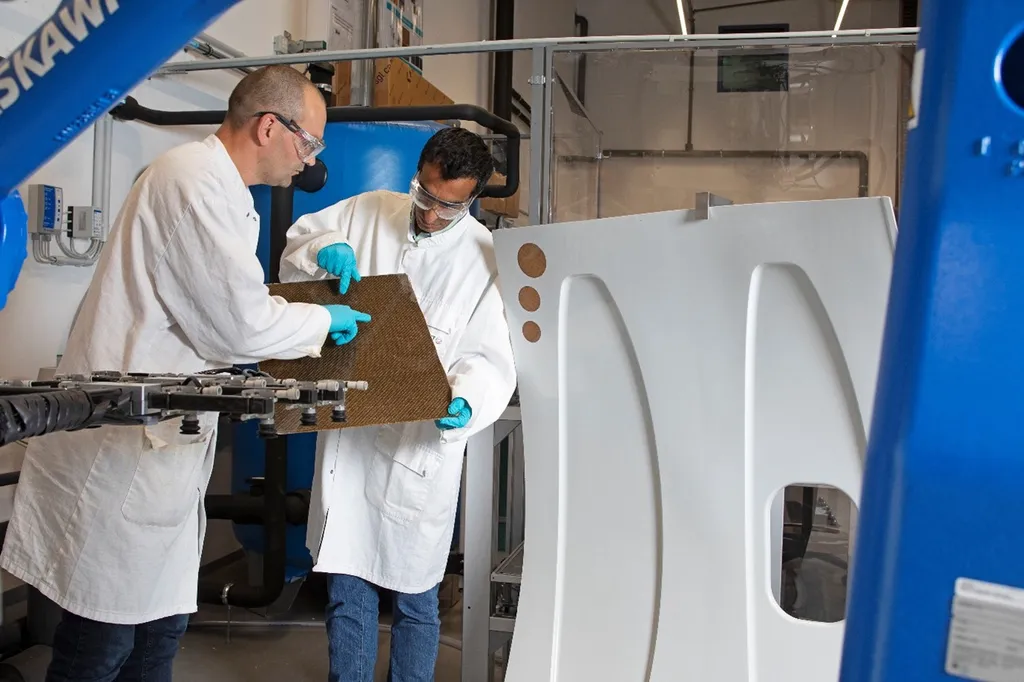In a significant stride towards advancing sustainable materials in the construction and energy sectors, researchers have unveiled insights into the performance of hybrid fibre composites reinforced with flax and carbon fibres. The study, led by Killian Bourdon from the Luxembourg Institute of Science and Technology and the University of Luxembourg, explores the intricate balance between strength, healing efficiency, and recyclability in biobased benzoxazine vitrimer composites. Published in the journal *Materials & Design* (translated to English as *Materials & Design*), this research could reshape how industries approach durable and eco-friendly materials.
Vitrimers, a class of recyclable composites, have garnered attention for their ability to heal after damage and be reprocessed, offering a promising alternative to traditional materials. Bourdon’s team investigated how different fibre types and stacking sequences influence the performance of these composites. “Understanding the interplay between fibre selection and structure is crucial for optimizing the damage-repair performance of vitrimer composites,” Bourdon explained. “Our findings provide a roadmap for tailoring these materials to specific industrial needs.”
The study revealed that sandwich structures with carbon fibre skins exhibited superior flexural strength, reaching up to 580 ± 50 MPa, compared to those with carbon fibre cores, which measured 180 ± 6 MPa. However, increasing the flax content reduced both flexural strength and interlaminar shear strength (ILSS), highlighting the trade-offs between sustainability and performance. “While flax fibres offer environmental benefits, their incorporation affects the mechanical properties of the composites,” Bourdon noted. “This trade-off must be carefully managed to meet the demands of high-performance applications.”
One of the most compelling findings was the significant difference in healing efficiency between composites with flax and carbon fibre skins. Composites with flax fibre skins demonstrated over 87% recovery in flexural strength and modulus, whereas those with carbon fibre skins showed less than 45% recovery. This disparity underscores the potential of flax fibres in applications where self-healing capabilities are paramount.
The research also shed light on the importance of stacking sequences in optimizing performance. Alternating structures exhibited intermediate performance, lower than composites with carbon fibre skins but higher than those with flax fibre skins. These insights could guide manufacturers in designing composites that balance strength, durability, and sustainability.
The implications for the energy sector are profound. As industries strive to reduce their carbon footprint and adopt more sustainable practices, the development of recyclable and self-healing composites could revolutionize the way structures are built and maintained. “This research opens up new possibilities for the energy sector, where the durability and longevity of materials are critical,” Bourdon said. “By optimizing the performance of vitrimer composites, we can contribute to more sustainable and efficient energy infrastructure.”
The study’s findings, published in *Materials & Design*, provide a foundation for future research and development in the field of hybrid fibre composites. As industries continue to explore innovative materials, the insights gained from this research could pave the way for more sustainable and high-performance solutions. Bourdon’s work serves as a testament to the potential of interdisciplinary collaboration and the power of scientific inquiry to drive progress in the construction and energy sectors.

